PRP therapy is widely used in various fields of medicine worldwide. It has been used for many years in hair, facial, and joint treatments. Its application in penile treatment started in recent years. PRP therapy is approved by the Food and Drug Administration (FDA), the authorized body that approves medical treatments and drugs in the United States and around the world.
PRP stands for Platelet Rich Plasma, which abbreviates the initial letters of the words in English. Platelets are blood cells involved in the clotting process. PRP treatments aim to use these cells after extracting them from the body, activating them outside the body, and then reintroducing them. These cells are not active in the bloodstream but migrate to the injured area during injury or surgery. Their primary task is to stop bleeding in the affected area and then release substances that aid in healing by generating or stimulating the growth of blood vessels and new tissues. These substances include various growth factors that contribute to the formation or renewal of blood vessels and tissues.
In individuals with erectile dysfunction, damage occurs to the blood vessels and structure in the penis. This damage includes the blockage of blood capillaries, leading to apoptosis (cell death) in the tissues nourished by these vessels. Due to disrupted blood flow, the cells that die in that area are replaced with fibrous tissues, increasing the area's hardness and reducing its flexibility. In summary, this means that due to disrupted blood flow in the blood capillaries, fibrous tissues form in the penis during erection instead of healthy tissues. As a result, the penis experiences weak erections or difficulty maintaining an erection. The efficacy of PRP therapy lies in correcting this mechanism to treat erectile dysfunction.
First, blood is drawn from the patient using the same method as traditional blood sampling, by drawing blood from a vein in the arm. The amount of blood taken should be about 20 ml.
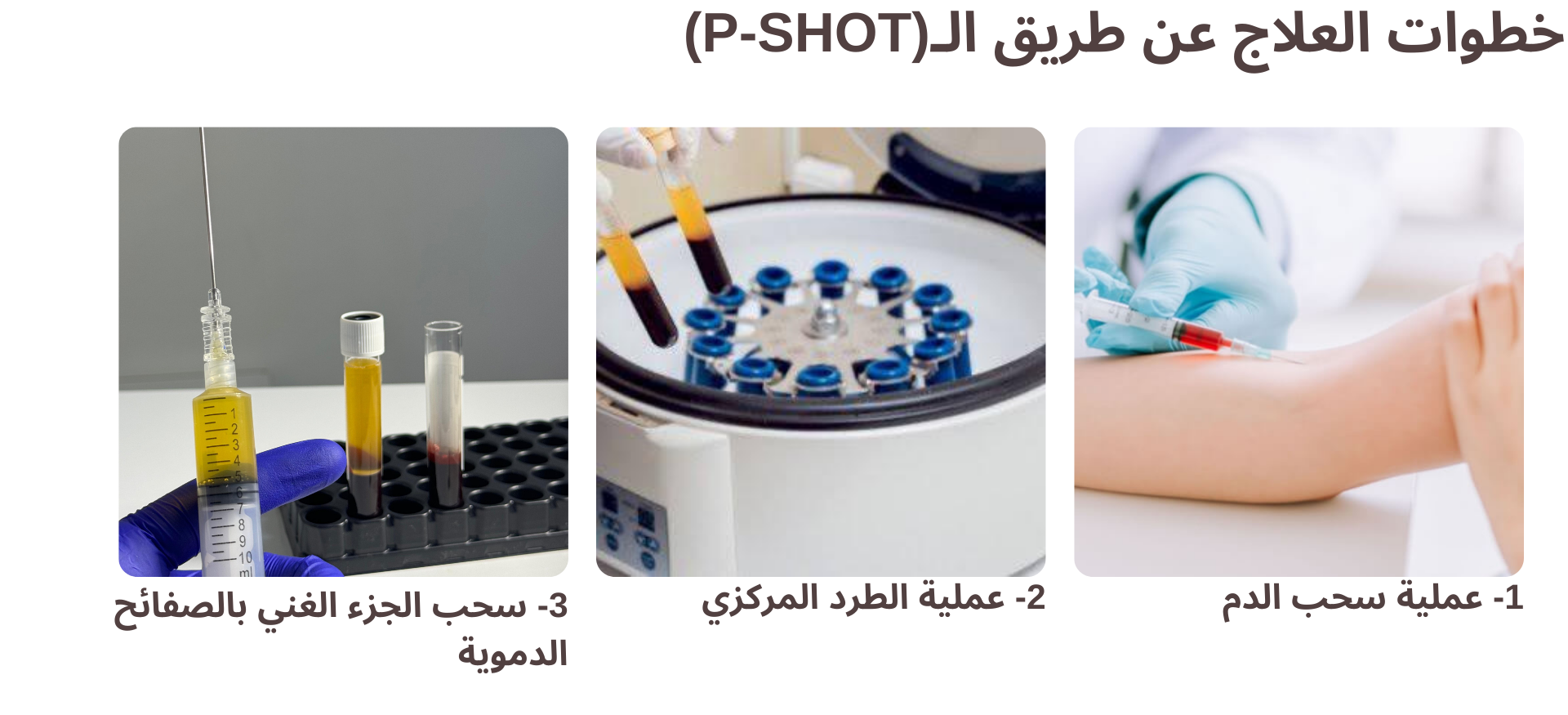
Then, the collected blood is prepared. Traditional blood sample tubes can be used for this purpose, but there are also specialized kits available in the market for this purpose. Blood samples are transferred to these kits (special tubes), which are then placed in a centrifuge, a device that spins the tubes at high speed (around 3000 revolutions per minute) to separate cells, proteins, and various fluids into different layers. After centrifugation, the fluid in the middle layer is drawn using a syringe.
The platelet-rich plasma mixture is injected into the desired area of the patient. The liquid (PRP mixture) is injected on each side of the penis using a fine needle. It is important that the injection is done inside the structure of the penis and not under the skin. Therefore, local anesthesia is not required, as the needle pain surpasses the pain of local anesthesia.

The patient can return to their daily life immediately, including sexual activity. There are no restrictions on movement or diet.
Since the mixture is prepared from the patient's own blood, there are no side effects or risk of allergies. It may take time for the treatment to take effect, up to 3 months. Repeat doses may increase success.
Repeat doses vary from clinic to clinic and from doctor to doctor. In our clinic, we perform PRP therapy in conjunction with ESWT therapy. The first dose is given during the first ESWT session, the second dose after 6 ESWT sessions (after 3 weeks), and the third dose after one month from the last ESWT session.
Additionally, 4 doses can be administered at 0, 3, 6, and 12 months as an alternative treatment schedule. Treatment success is always permanent.
Adding PRP therapy alongside ESWT therapy for erectile dysfunction significantly increases treatment success. Therefore, we prefer to use combined therapy more extensively in our clinic.
It is preferable not to use painkillers on the day of treatment and the following day. It is not appropriate to perform PRP therapy for those who:
- Have blood clotting problems, and it is preferable for them to stop using anticoagulants before treatment for 3-4 days.
- Suffer from severe erectile dysfunction. PRP therapy should be directed to those with mild to moderate erectile dysfunction, such as ESWT therapy.
- Have active infections anywhere in the body and are using antibiotics because of it. These patients can undergo treatment after completing infection treatment.
- Additionally, PRP therapy can be used in other cases in the field of urology, such as Peyronie's disease, penile enlargement, chronic bladder inflammation, chronic prostatitis, and interstitial cystitis.
(Extracorporeal Shock Wave Therapy = ESWT). As the name suggests, it is a treatment method based on focusing shock waves produced in a device on the human body (which are high-frequency invisible sound waves) using a special device, allowing them to be directed to the targeted area in the body by the device. This method is effective in treating many conditions, including pain problems by stimulating nerve endings in the affected area and promoting the renewal of blood vessels and tissues.
Many individuals suffer from erectile dysfunction due to various reasons, including weakened blood vessels inside the penis. ESWT works by expanding these vessels and promoting the formation of new blood vessels in the treated area, which contributes to improving blood circulation and tissue regeneration. Thus, this treatment can be effective in treating erectile dysfunction resulting from vascular issues, but may not be effective in very advanced cases.
It can be applied without anesthesia and can be performed in outpatient clinics. The appropriate device is placed on the area to be treated, and about 1500 shocks are directed in each session, with each session lasting between 10-20 minutes. Typically, the treatment requires several sessions ranging from 6-12 sessions, depending on the patient's condition. The patient may feel improvement after the first session and can return to daily activities after treatment.
ESWT is preferred due to its high success rates in treating the mentioned conditions, and because it is non-surgical and does not require anesthesia or long recovery periods after treatment. It is also recommended as a primary treatment modality in the European Association of Urology's guidelines for Erectile Dysfunction, updated annually.
Various treatments are used in cases of erectile dysfunction. They can be classified into medicinal treatments, Extracorporeal Shock Wave Therapy (ESWT), PRP (also known as P-shot), vacuum devices, and artificial penile devices. Medicinal treatments and vacuum devices are mainly symptomatic treatments (for daily management), while penile implant surgery is a definitive solution but is a major surgical procedure with no turning back. It is carried out as a last resort for patients who do not benefit from any other treatment. However, both patients and doctors are interested in applying permanent treatments and addressing this important issue in men. In recent years, hopes in this regard have increased significantly. In other articles, we talked about ESWT and PRP treatments. Both of these treatments aim at achieving a therapeutic outcome, i.e., achieving a permanent result, but success rates are limited, making them suitable for patients with mild to moderate erectile dysfunction.
Causes of severe erectile dysfunction include high blood pressure, diabetes, heart diseases, chronic kidney diseases, Peyronie's disease, and prostate surgery and radiation therapy. Until now, penile implant surgeries have been the only option for patients suffering from severe erectile dysfunction. However, with animal experiments conducted in the past decade along with subsequent clinical studies, there is great hope in this field. This hope is known as stem cell therapy.
Stem cells are the basic cells found in abundance in the body, especially in bone marrow and fatty tissues, and can turn into any type of body cell. They go to areas where the body needs renewal and healing. In recent years, these cells have begun to be used in many medical fields and have given new hope for many diseases.
In cases of severe erectile dysfunction, this treatment has become a new hope. Providing stem cells taken from the patient's body and injecting them into the penis provides a permanent treatment and rejuvenation for erectile dysfunction. These cells transform into necessary cells inside the penis (such as blood vessels, nerves, and muscles), and regenerate and heal there.
This treatment can be applied in cases of severe erectile dysfunction, of course, and can also be applied in cases of mild to moderate erectile dysfunction, where success rates are higher.
As mentioned, these cells are abundant in bone marrow and fatty tissues. Therefore, stem cells are obtained either from bone marrow by needle aspiration and collection of the fluid, utilizing the stem cells present in this fluid, or through liposuction (fat suction) from the abdomen or other fatty areas, and obtaining stem cells from within these fats.
However, due to the limited quantity of stem cells taken from bone marrow, these cells are cultured in the laboratory and injected into the patient's body. This means two procedures are performed at different times. While stem cells taken from fat can be injected in the same session after undergoing certain procedures.
In our clinic, we use stem cells taken from fat. The procedure is as follows:
- The patient is locally or generally anesthetized to ensure they do not feel pain.
- Fat is collected from the abdominal area by approximately 60 cc using the liposuction technique.
- The collected fat is placed with blood and other tissues into tubes and placed in a centrifuge machine where necessary and unnecessary structures are separated.
- The fat is mechanically broken down between two needles using micron-level blades (non-enzymatic) to obtain the cells.
- The harvested fluid is placed back in the centrifuge machine to separate the stem cells from the fat cells and obtain the fluid containing only the stem cells (stromal vascular fraction).
- The harvested fluid is then injected into the penis tubes containing blood, which aids in erection, thereby completing the procedure.
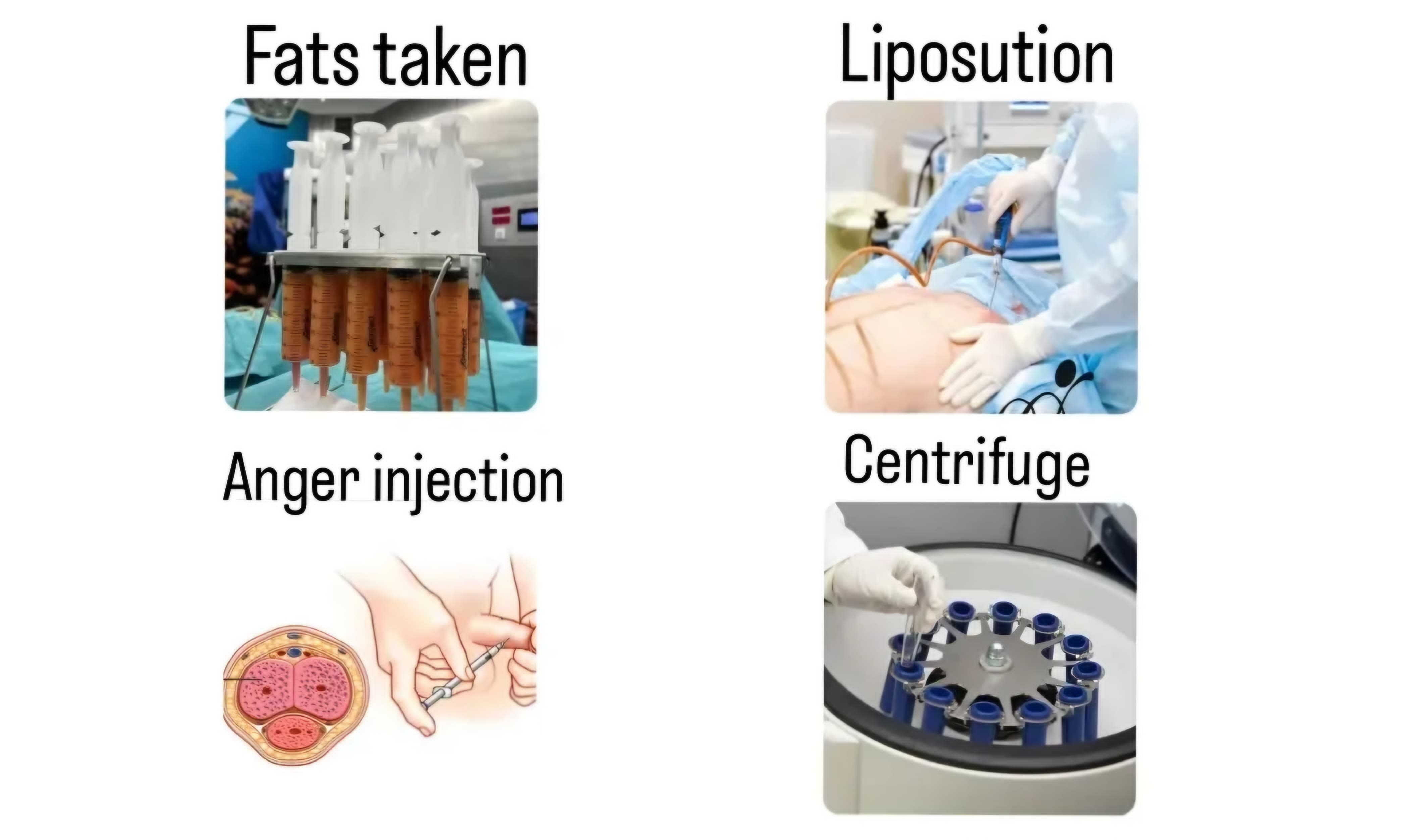
This treatment is effective in treating severe erectile dysfunction that does not respond to other treatments such as medications or non-surgical treatments. However, the patient should be aware that this procedure is surgical.
Studies have focused on patients who have not benefited from any treatment and whose only options were to use prosthetics. These studies show that more than 50% of these patients achieved an erection capable of intercourse without the need for prosthetics. Studies also indicate that the effectiveness of SVF therapy peaks at the end of the sixth month.
Clinical studies in this regard suggest that the prevailing opinion among doctors applying this treatment worldwide is that stem cell therapy has much higher success than using medicinal treatment or other auxiliary treatments.
It is also believed that this treatment will become more widespread in the next decade. Additionally, the use of SVF therapy has begun in the field of urological diseases such as penis extension, chronic prostatitis, chronic cystitis, loss of bladder control, overactive bladder, and more.
This treatment is performed in one day. The patient can return to work the next day. Some mild pain and bruising may occur in the liposuction area, but they will disappear spontaneously. Rare leaks of fluid may also occur at the liposuction needle insertion site for two to three days. There is no need for sexual activity restrictions after the procedure.
Among the causes of severe advanced erectile dysfunction are high blood pressure, diabetes, heart diseases, chronic kidney diseases, Peyronie's disease, prostate surgery, and radiation therapy. Until now, penile implantation has been the only option for patients suffering from severe erectile dysfunction. However, especially in the past decade, significant hopes have arisen in this regard thanks to experiments on animals and subsequent clinical studies. The first step in this regard was stem cell therapy. However, developments in nanotechnology have shown that the real effect of stem cells in treatment is achieved through small particles beneath the cell known as exosomes.
Exosomes are small external vesicles or tiny bubbles secreted by most cells in the body, especially stem cells and platelets. They are used to transfer some genetic information and proteins from nascent young cells to other cells. They can be described as small compounds with a diameter ranging from 30 to 150 nanometers, which is 1/1000 of the cell size. This small size enables them to reach every cell and tissue in the body.
- Transporting molecular components between cells and protecting their contents from enzymes.
- Regulating the immune system, where they can exchange gene information between immune cells and activate or deactivate them.
- Participating as major regulators in the digestive and nervous systems.
- Contributing to tissue healing and repair of damaged tissues.
- Reducing inflammation and enhancing the immune system.
- Promoting cell renewal and differentiation.
Exosomes have been used in recent years in several medical fields, such as dermatological diseases, bone surgery, neural tissues, and healing processes. In recent years, new research and treatments have emerged in the field of urological diseases using them.
Studies have shown that exosomes improve blood flow and help maintain erectile function in the penis. Additionally, exosomes can assist in reducing inflammation that causes erectile dysfunction and minimizing cellular damage. Exosomes can also stimulate the secretion of hormones that play a role in maintaining erectile function. They can be particularly used in restoring erection after surgery.
Researchers have discovered that one of the major limitations of stem cell injections in treating erectile dysfunction is that the bloodstream may quickly wash away the stem cells from the damaged area, limiting their therapeutic effect. Whereas exosomes can remain in the blood vessels after injection and have a better effect on the cells. Therefore, exosomes may be more effective than stem cell therapy in the injected area.
Studies have shown that exosomes can protect smooth muscle cells from apoptotic programming and prevent fibrosis, while also renewing penile nerves after surgery to avoid erectile dysfunction.
Exosomes support the renewal of penile nerves and smooth muscles and reduce collagen accumulation, leading to improved erectile function. Researchers suggest that the RNA stimulating vascular formation in exosomes may be the underlying mechanism behind this effect.
The process of this therapy is very easy. Approximately 20 ml of blood is drawn from the patient's arm, thus, this treatment does not require surgery like liposuction or surgery.
The drawn blood is placed in a special tube and sent to the laboratory for the following procedures:
1- Exosomes derived from platelets are isolated from the patient's blood sample in our laboratory. This is done using techniques such as sequential centrifugation, size-exclusion filtration, and size-exclusion chromatography (SEC), which take about two days.
2- Through this method of exosome isolation, completely autologous exosomes (i.e., belonging to the same person) are obtained.
3- The quantity and identity of exosomes are determined and estimated according to the International Society for Extracellular Vesicles (ISEV) standards.
4- Four tubes of exosomes, each containing 2 ml, are prepared for users in our clinic. The required dose for the patient is sent on the day of treatment by mail, and the remainder is kept in the laboratory at -80 degrees Celsius under the patient's name for use in subsequent sessions.
5- Each tube contains at least one billion exosomes per milliliter.
In our clinic, the treatment is applied according to the degree of the patient's erectile dysfunction problem, which can range from 1 to 3 sessions. A portion of the prepared exosomes is either given intravenously or injected directly into the penis. The procedure takes about 20 minutes.
This treatment is done on the same day, and so far, there have been no reports of serious side effects or allergies. We recommend the following for optimal response to exosome therapy:
- Avoid using anti-inflammatory medications (such as pain relievers).
- Avoid strenuous activities during the first 24-48 hours after treatment.
After that, the patient can return to their normal daily life.
The penis is a male sexual organ consisting of a body, head, and skin covering. Beneath the skin, there is a thick membrane, which has a flexible structure and protects the internal structures. Inside the penis, there are three tubes or long tubular structures. The lower tube is the urethra (urethra), which opens into the bladder and is the channel from which urine and semen are excreted. Above these tubes, there are two additional tubes next to each other. These tubes have a rich blood vessel structure. During an erection (erection), blood flow from these vessels increases rapidly, and these tubes fill with blood. The veins that return blood during this period close, leading to the trapping of blood in these tubes and thus promoting an erection that swells with blood like a balloon.
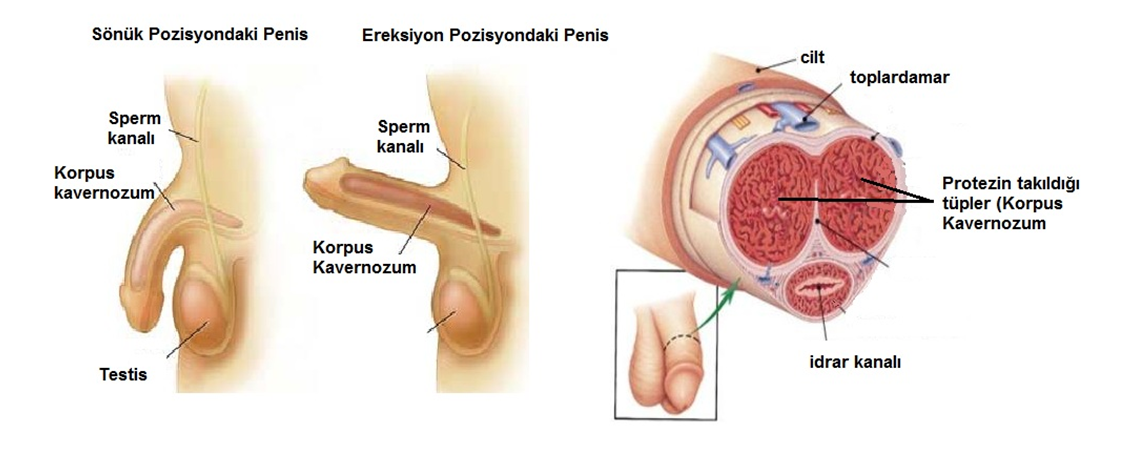
In the case of patients suffering from erectile dysfunction, regardless of the cause, sufficient blood cannot be collected in these tubes, and thus an adequate erection does not occur for sexual intercourse. The principle of the implant is to fill these tubes. Whether there is a solid body (partial implant) or an inflatable balloon placed inside these tubes, the desired erection in the penis is achieved.
1- For those suffering from erectile dysfunction;
2- For patients whose cause of erectile dysfunction is not psychological;
3- For patients who have not benefited from similar drug therapies;
4- For patients who do not want to use medication;
5- For patients who cannot use medication due to allergies or side effects, etc.;
6- Implant surgery is not performed for patients who have a condition that is a contraindication for surgery;
7- For patients using blood thinning medications, penile implantation can be done after consultation with the appropriate specialist (such as cardiology, neurology, and brain surgery), and after discontinuation of the medications.
There are 3 types of artificial penile implants that can be installed for patients.
1- Single-piece penile implant,
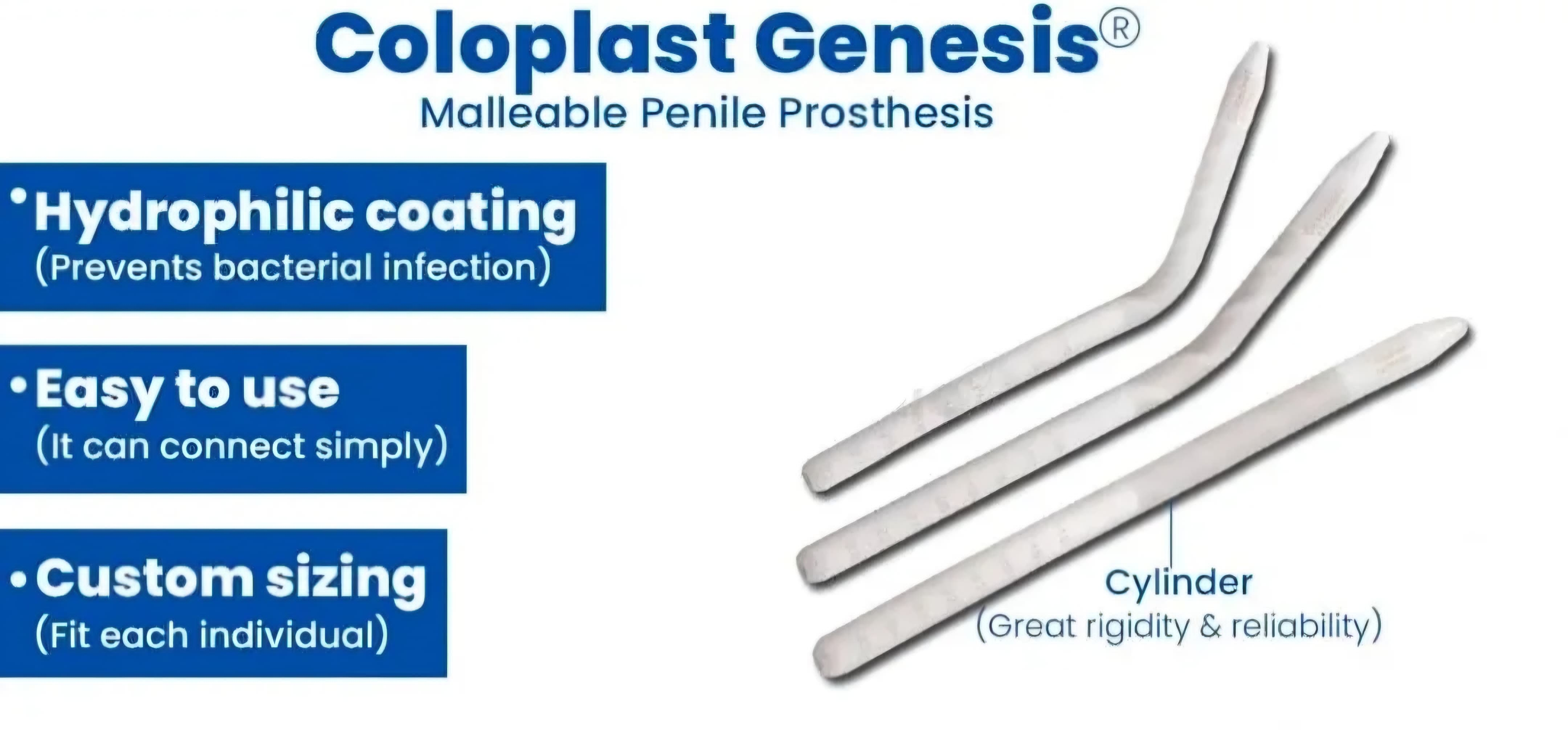
2- Two-piece penile implant,
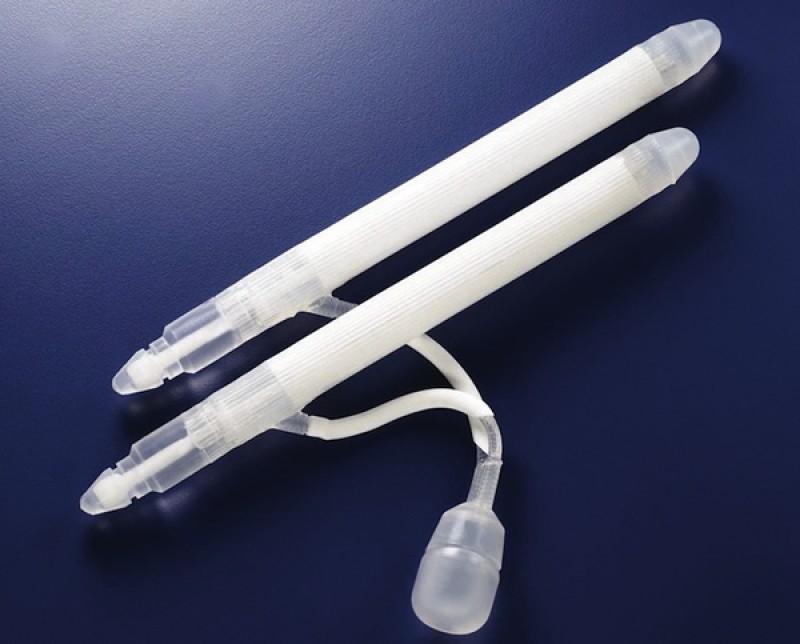
3- Three-piece penile implant.
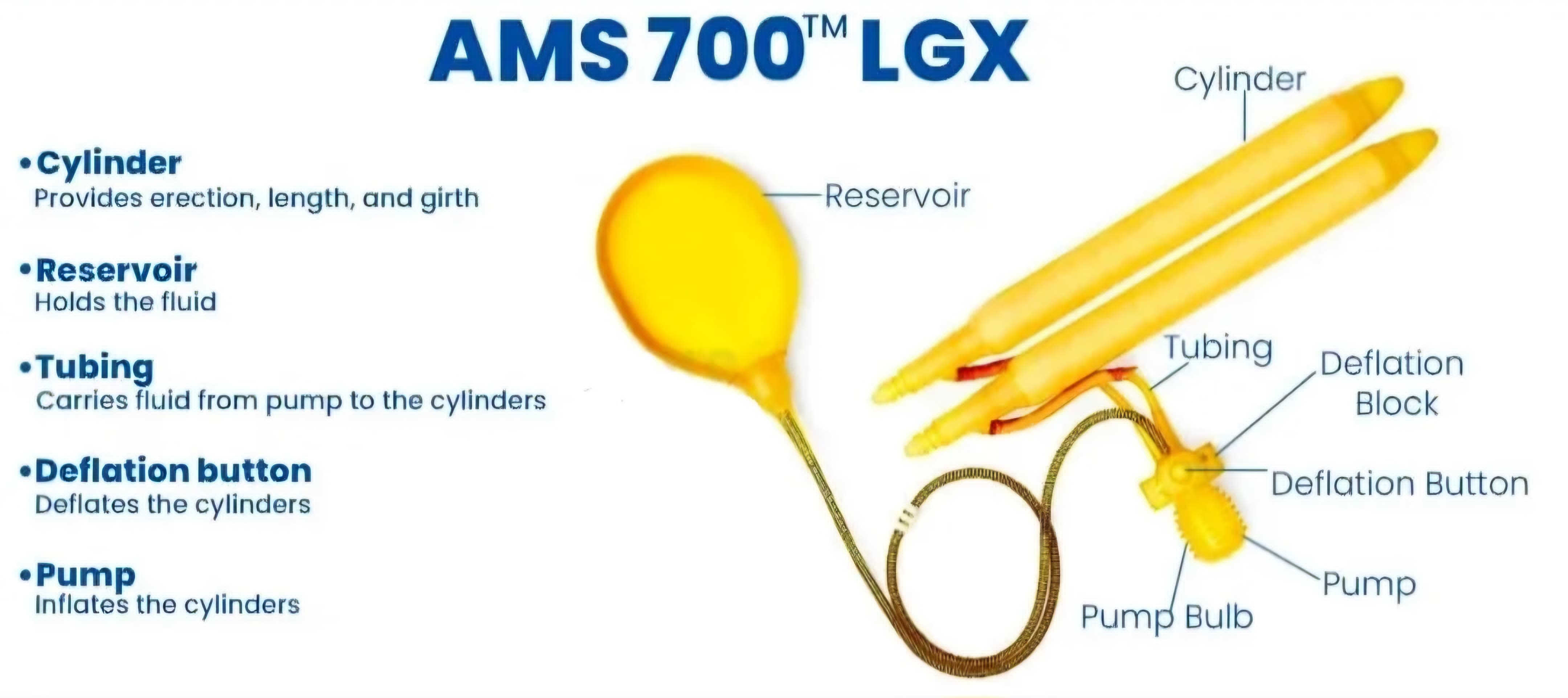
The most commonly used artificial implants today are the three-piece artificial implants. The second most commonly used type is the single-piece artificial implants. Two-piece artificial implants are often not preferred due to patient dissatisfaction.
A single-piece penile implant:
This type of artificial implants is called bendable penile implants. A pair of rigid rods is inserted into the penis. After healing, the patient straightens the penis during intercourse, and after intercourse, they can bend the penis by hand and wear underwear.
The advantage of these artificial implants is ease of use. The patient does not need training. There is no need for manual dexterity. Since it does not contain any mechanisms, it is very easy to learn how to use it.
The disadvantages are; the patient must constantly carry a rigid and thick penis. Apart from this, in patients with diabetes, if the patient's diabetes is not under control and wound healing is poor, there is a possibility that this artificial end may cause skin tears in the following years. For this reason, we do not recommend this type of artificial implants for diabetic patients in our clinic.
This surgery can be performed under general anesthesia or spinal anesthesia.
A 5 cm incision is made at the intersection of the penis and testicles. Then, the membrane covering the adjacent tubes (corpora cavernosa) is exposed without damaging the urethra, the urinary channel.
The membrane on the tubes is cut on both sides by about 1.5 cm, and the inner part of the tube is prepared for placement of the artificial end. At this stage, some dilatation tools are used to clean the structures inside the tube (veins and curtains) and convert it into an empty tube.
The length of these tubes is measured from the inside, and two artificial ends are placed to fit this measurement. Then, the wounds are stitched and properly bandaged.
This time may vary depending on the surgeon's experience, the patient's anatomy, and the type of artificial end installed, but it averages one hour.
If the surgery goes smoothly, the patient is admitted to the hospital for an average of one to two days, then discharged from the hospital on the condition that they rest.
At the end of the surgery, the compressive bandage applied around the penis is not removed. Then the bandage is removed and reapplied for a few more days. Patients are routinely given antibiotics and pain relievers. After one week, the patient can shower. If the skin stitches are soluble, they are not removed for the patient, and if the stitches are not soluble, they are removed after 10 days.
Patients with an artificial end can engage in sexual activity after at least 6 weeks from the surgery. However, the doctor may extend or shorten this period depending on the patient's condition.
Many patients undergoing this surgery are diabetic patients. Wound healing is somewhat difficult in this patient group. Problems such as wound infection, bleeding, and wound dehiscence may occur in this group and other patients outside this group. Apart from this, the area where the artificial end is located may become infected, and the artificial end may need to be removed. Especially with single-piece artificial implants, difficulty in urination may occur due to the artificial end pressing on the urinary tract. Single-piece artificial implants should not be preferred in patients with prostate enlargement or new prostate complaints.
In healthy individuals, erection begins with the idea of intercourse or fantasies, and in patients using artificial implants, the patient achieves erection whenever they want. This difference creates a misconception among patients that there will be no pleasure in relationships with the artificial end. However, the pleasure obtained during intercourse is transmitted through the nerves in the skin. The location where the artificial end is placed has no relation to sensation or the spermatic canal. In short, patients do not feel any difference in terms of pleasure, sexual arousal, and ejaculation compared to normal individuals. In fact, in addition to providing a healthy and full erection, the artificial end is also satisfactory for patients suffering from premature ejaculation. Because even if the patient ejaculates early, they can continue intercourse unless the artificial organ is emptied of air. The partner can easily determine this period.
Almost all patients who receive a prosthesis find it difficult to adjust to the artificial end because they do not know how to use it well in the first 1-2 months. However, after a period, they get used to using it, and satisfaction begins after that. From our own experience, our patient satisfaction rate reaches around 99%. In addition, studies have shown that the satisfaction of patients' partners receiving artificial implants is higher than the satisfaction of the patients themselves.
Three different brands of single-piece implants used in our clinic are as follows:
1- AMS brand artificial implants from Boston Scientific

2- Coloplast artificial implants
3- Rigicon brand artificial implants